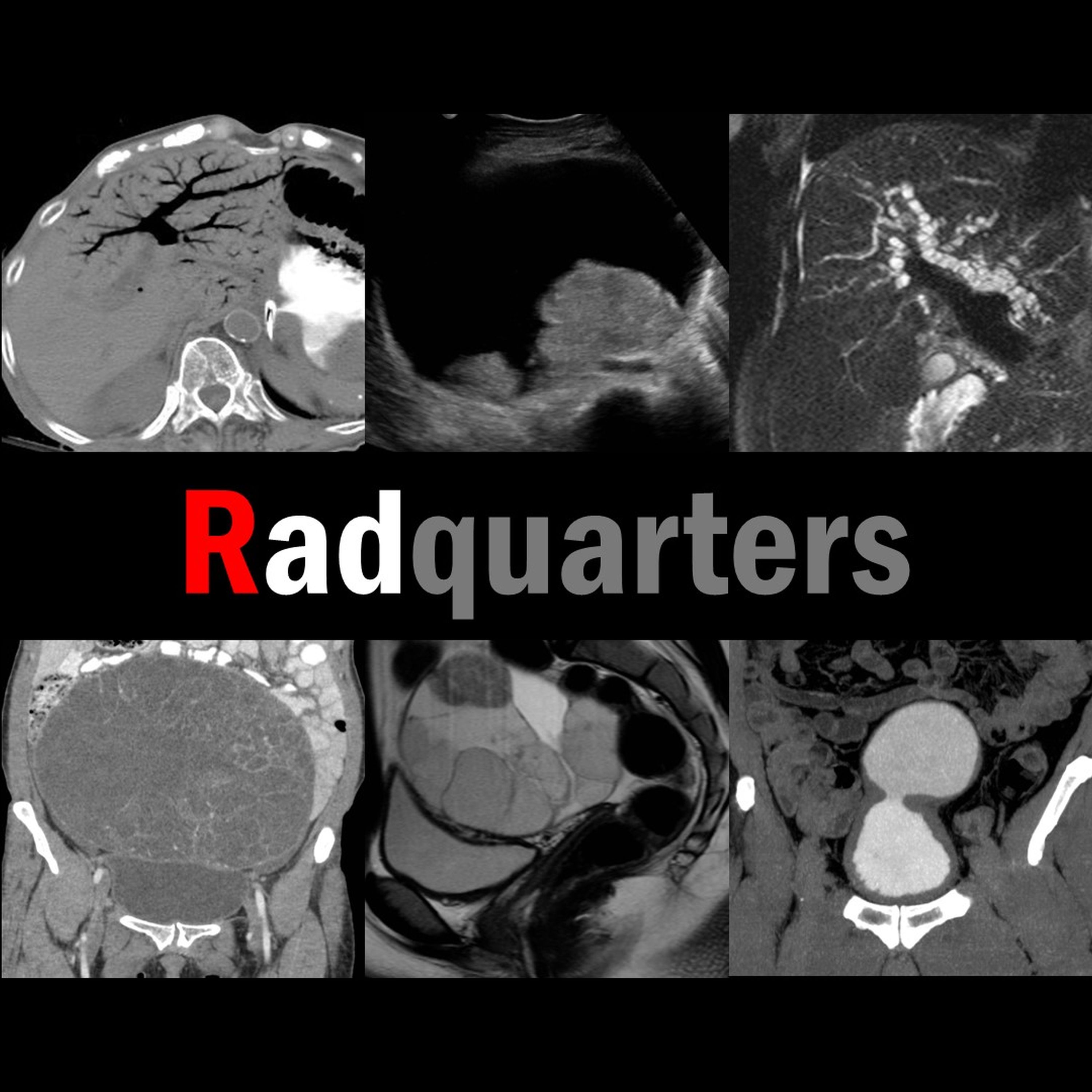Case Review: Ultrasound of Uterine Adenomyosis
Description
In this radiology lecture, we review the ultrasound appearance of adenomyosis through three unique cases, including an MRI example.
Key teaching points include:
* Adenomyosis results from ectopic endometrial tissue in myometrium. Leads to dysfunctional smooth muscle hyperplasia/hypertrophy surrounding ectopic glands.
* Cause unknown.
* Common, usually multiparous women of reproductive age.
* Additional risk factors: Early menarche, short menstrual cycles, high BMI = High estrogen exposure.
* Rarely seen in postmenopausal patients, unless treated with tamoxifen for breast cancer.
* Often asymptomatic, but can present with menorrhagia, dysmenorrhea, dyspareunia, and chronic pelvic pain.
* For diagnosing adenomyosis, transvaginal US much more sensitive and specific (89%) than transabdominal imaging.
* Most specific US findings: Linear echogenic striations/nodules radiating from endometrium into inner myometrium. Tiny myometrial and subendometrial cysts = Fluid-filled glands.
* Additional US findings: Enlarged, globular uterus with diffuse myometrial bulkiness, myometrial heterogeneity, irregular endometrial-myometrial interface, hyperechoic islands, and pencil-thin “venetian blind” or “rain shower” shadowing. Cine clips extremely helpful.
* Adenomyosis can cause asymmetric myometrial thickening.
* Focal adenomyosis (adenomyoma) has ill-defined margins compared to fibroids, typically elliptical as opposed to rounded in shape.
* May see abnormal vascular flow: Increased vascularity with tortuous vessels penetrating myometrium. Helps differentiate adenomyosis from fibroids, which tend to displace vessels and show circumferential flow.
* On US, thickened junctional zone may manifest as a hypoechoic halo surrounding echogenic endometrium.
* MRI “traditionally” the modality of choice to diagnose adenomyosis, and junctional zone thickened to 12 mm or greater highly specific. May contain punctate T2 hyperintense cystic foci/T1 hyperintense hemorrhage.
* However, modern TV US shows comparable accuracy to MRI with no statistical significance between sensitivities and specificities: “Transvaginal US should be considered the primary imaging modality for the diagnosis of adenomyosis.”*
* Treatment: Pain management, tranexamic acid, OCPs, GnRH agonists.
* If severe, not relieved medically, and no desire for fertility: Hysterectomy.
*Cunningham RK, Horrow MM, Smith RJ, et al. Adenomyosis: A Sonographic Diagnosis. RadioGraphics. 2018; 38:1576-1589
To learn more about the Samsung RS85 Prestige ultrasound system, please visit: https://www.bostonimaging.com/rs85-prestige-ultrasound-system-4
Click the YouTube Community tab or follow on social media for bonus teaching material posted throughout the week!
Instagram: https://www.instagram.com/radiologistHQ/
Facebook: https://www.facebook.com/radiologistHeadQuarters/
Twitter: https://twitter.com/radiologistHQ
More Episodes
In this radiology lecture, we review the ultrasound appearance of parathyroid adenoma!
Key teaching points include:
* Benign tumor of the parathyroid glands
* Most common cause of primary hyperparathyroidism: Elevated serum calcium and parathyroid hormone (PTH) levels
* Ultrasound: Solid,...
Published 04/04/24
Published 04/04/24
In this radiology lecture, we review the ultrasound appearance of parotitis in the pediatric population!
Key teaching points include:
* Parotitis = Inflammation of the parotid glands
* Acute parotitis is usually infectious, most commonly viral
* Mumps is most common viral cause in children,...
Published 03/07/24


